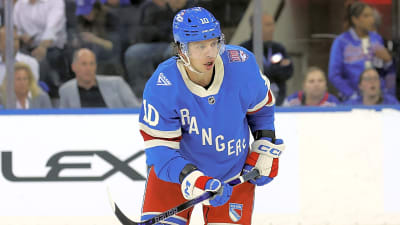What are your expectations for the #GoHabsGo powerplay this season?
Pierre McGuire: "I would be really disappointed if the powerplay wasn't 24% or higher"#thesickpodcast @TonyMarinaro pic.twitter.com/bhI169lHe6
— The Sick Podcast with Tony Marinaro (@thesickpodcasts) August 19, 2025
On Monday night’s episode of the Sick Podcast, Tony Marinaro and Pierre McGuire discussed the Canadiens’ power-play and just how good it can be with the new additions made this summer. If things go as planned, the Habs may just have one of the most dangerous power plays in the NHL.
McGuire mentioned that he would be disappointed if the Habs power-play doesn’t run at a 24% success rate. He reasons that the Habs will have two very distant looks and have two strong units that will be led by an elite puck mover (Lane Hutson and Noah Dobson) and a pure sniper (Cole Caufield and Patrik Laine) on both units. McGuire also said that he expects the Canadiens to continue running Nick Suzuki the full 2 minutes on the power-play. This likely will happen, as there isn’t another offensive centre on the roster that can be trusted to put up points.
When McGuire mentioned how there are two distant units, he was specifically referring to the difference between Hutson and Dobson. With Dobson, the Habs have a quarterback who also has a strong shot from the backend. However, with Hutson, the Habs have an elite decision-maker who can create chances for his teammates by out-maneuvering his opponents so flawlessly, as we saw this past season.
Two x-factors that the Canadiens will have on the power-play are Juraj Slafkovsky and Zachary Bolduc. A year older, Slafkovsky should be stronger and harder to move from in front of the net. If he sticks to the net front presence like he should on the man-advantage, he could score close to 10 goals on the power-play from cleaning up garbage in front of the net or deflecting pucks. Then you have Bolduc, the shooting threat from the bumper. Towards the end of last season, Bolduc was one of the best shooters from the bumper in the entire league.
Finally, the Canadiens have an elite young talent like Ivan Demidov that can be a dual threat as a shooter or passer. Demidov’s spot is likely to be on the right half wall where fellow-Russian Alex Kovalev used to do his work. The Habs have lacked a true threat from the right half wall since Alex Galchenyuk was traded in 2018. Now, with true threats on both sides of the ice, the Habs won’t be as predictable as they were in the early years of the rebuild.
According to McGuire, he expects the Habs to essentially have their power-play be as good as it was during the 2007-08 season when Kovalev was the team’s main offensive star.
Last year, the Canadiens’ power play was above 20% for the first time in seven seasons, but with the additions of Ivan Demidov, Noah Demidov, Zach Bolduc and a healthier version of Patrik Laine, there is no reason why the Habs couldn’t improve on that. I truly don’t remember a time in my lifetime when the Habs had two power-play units that were legitimate threats when on the ice. Even during the years when the Habs had a top 5 power-play, the team only had one dominant unit on the team.
The Habs may be one of the few teams that can ice two dangerous power-play units at all times, which is why McGuire may have a point in thinking the Habs should have a 24% success rate on the power-play. Looking at last season’s power-plays around the league, it seems like a plausible expectation for the Canadiens to score on 24% of their power-plays.
The Habs had the 21st-best power-play last year despite having their best man advantage in years. If everyone stays healthy for most of the year, the Habs could have multiple players who score 10+ power-play goals and finish among the top 10 power plays overall in the league.
What are your expectations for the power-play in 2025-26?
More must-reads:
- Flyers in tough spot with former first-round pick Matvei Michkov
- Knee-jerk reactions to first two weeks of NHL season
- The 'Most two passing touchdown NFL games' quiz
Breaking News
Trending News
Customize Your Newsletter
 +
+
Get the latest news and rumors, customized to your favorite sports and teams. Emailed daily. Always free!








